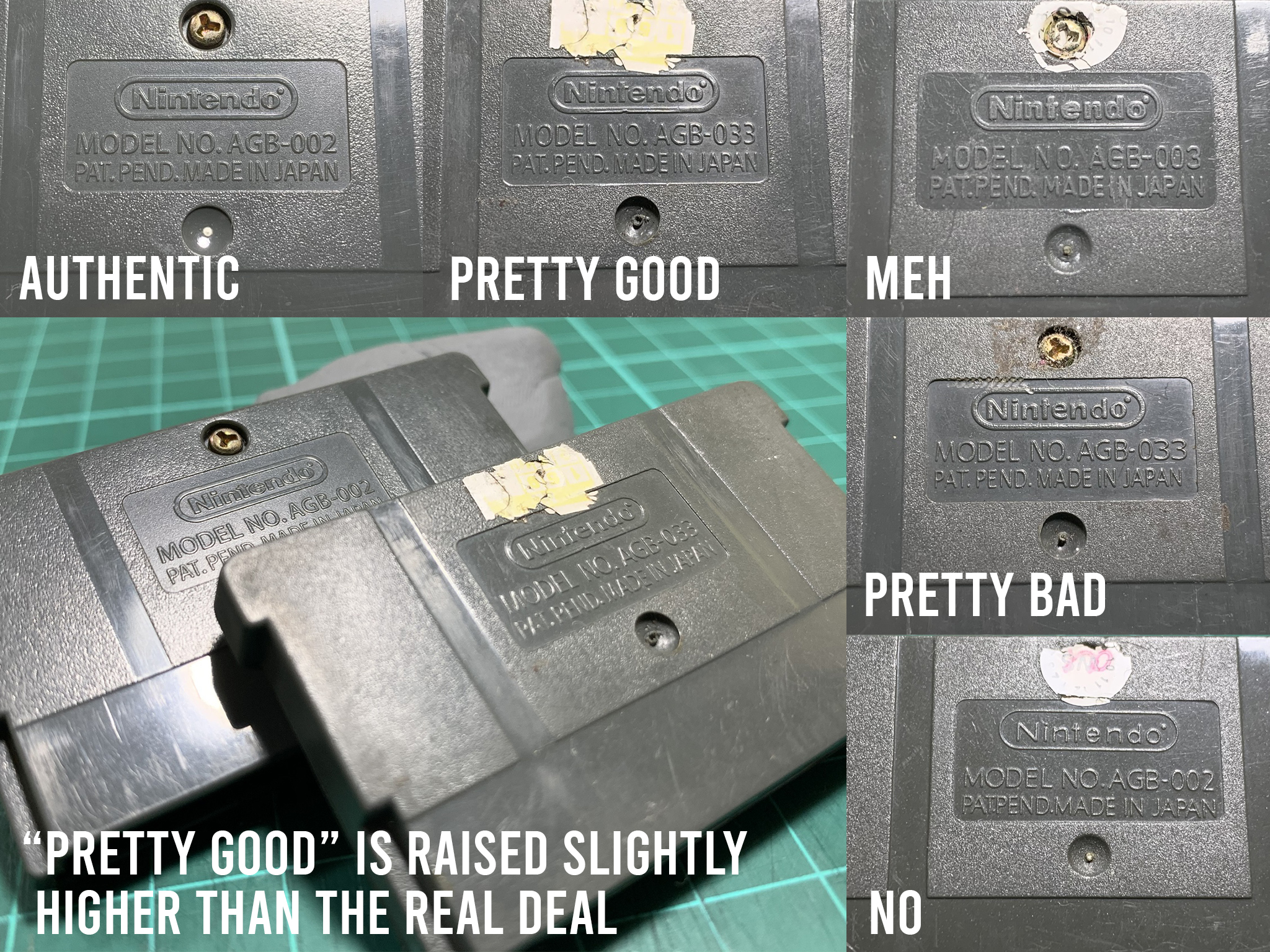Opening a cart is the best way to verify a cart. However, you can verify that a game is genuine or fake without opening carts. Pokemon games can differ, so there is a separate section especially.
Verifying GBA games
Label
- Cart label art will not be the same as the box art. What's the best way to find your game's proper label art? Google.
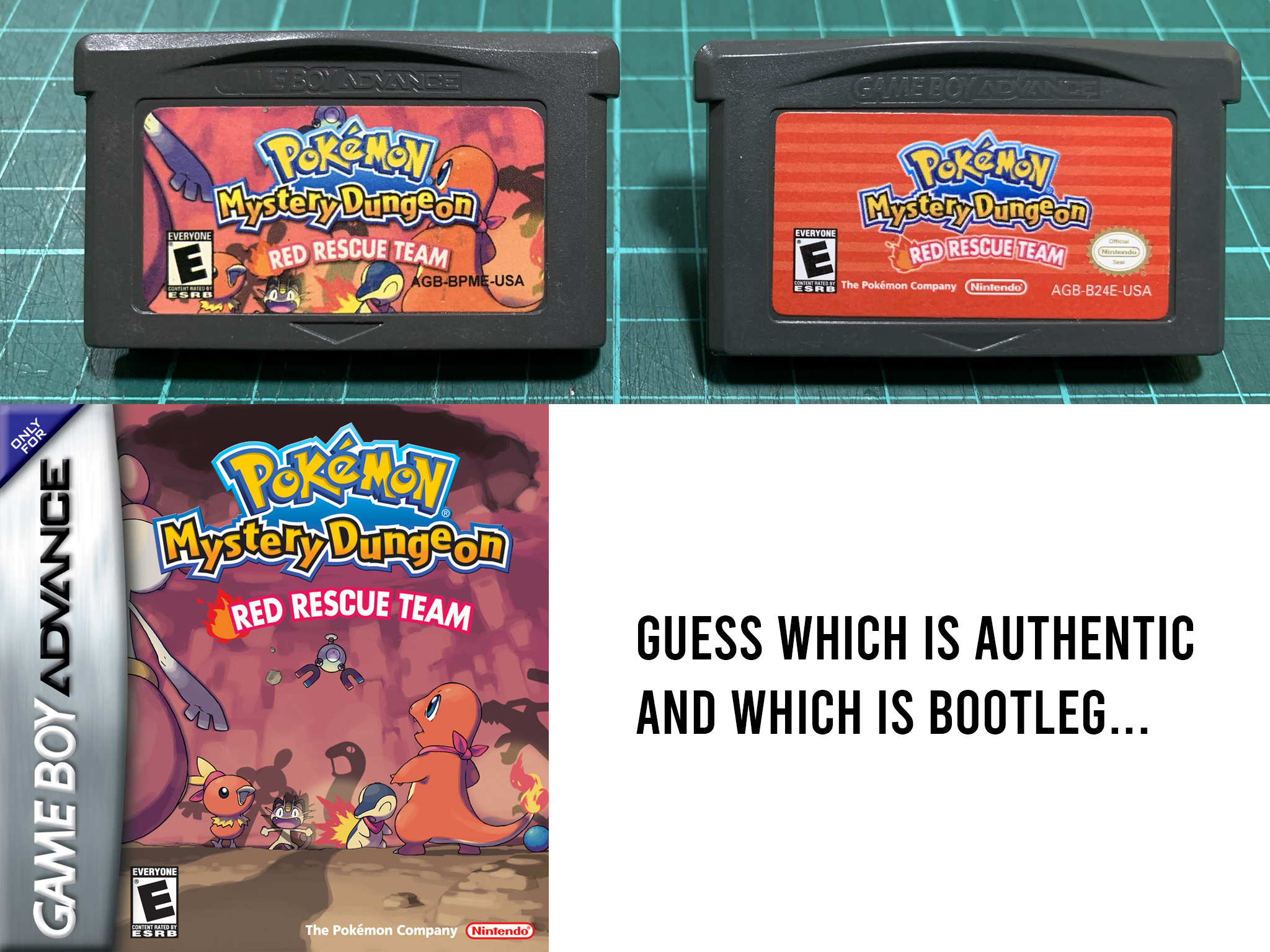 |
| The label art for these games shouldn't be just cropped box arts. Rarely does that ever even happen. |
Label should have a factory imprint on it, like two numbers or a number and a letter. These fade over time though but labels can easily be replaced. Some third-party games do not have a factory imprint, along with rarely some first-party titles, like Pokemon. This is common. However, it is becoming increasingly common for counterfeit GBA carts to include a number stamp. As a result, not a verification method.- ESRB's logos are NOT a good way to identify bootlegs. If you search for images of different carts, you'll see that the only thing consistent about them is their inconsistency.
- Unless they're unusually thin, like, not even in bold style font. Thin "E"s are usually a dead givaway for bootlegs.
- Low resolution, home-printed label. A very easy, noticeable trait of fake carts.
- The code printed on the label being incorrect, if the code is even there.
Cart
- "GAME BOY ADVANCE" should be shallowly etched under the grip/lip.
- Bootlegs have a tendency to mold everything too deep. Everything from the "GAME BOY ADVANCE" down to the arrow at the bottom. Some fakes are better than others. In this picture, the "GAMEBOY ADVANCE" on top isn't the most obvious. The down arrows however, are dead giveaways. Authentic games don't have them even half a millimeter deep.
- The back of the cart should also have the following etchings:
- The Nintendo typeface.
- AGB-002 for standard cartridges (AGB-003 is related to the battery pak, AGB-033 is not a valid AGB code). Other AGB-0xx codes are used for different cartridges.
- PAT. PEND. MADE IN JAPAN - spaced correctly.
- Injection molding entry point.
Most bootlegs won't get Nintendo's logos right. Nintendo's logo is thick vertically and thin horizontally. If the font is consistent in its thickness, it's bootleg. The logos at the back are also a telltale sign. As stated previously, some are better than others. In the picture, "pretty good" has the logo etched a little deeper, another thing mentioned earlier.
Board
- Without opening the cart, a portion of the board should still be visible.
- Above the gold terminals, the Nintendo logo should be visible followed by a serial code. This was one of the most common ways most people diagnose bootlegs. Some bootlegs are pretty good though. Some don't even have "Nintendo" written on it but nails the font, making them difficult to tell apart from the real deal at this angle. Couple this with the fact that most people assume that just because the stamp is there guarantees that the game is authentic means that this is not at all a good tell. I would even go as far as to saying that this is one of the worst tells as it frequently results in misdiagnoses.
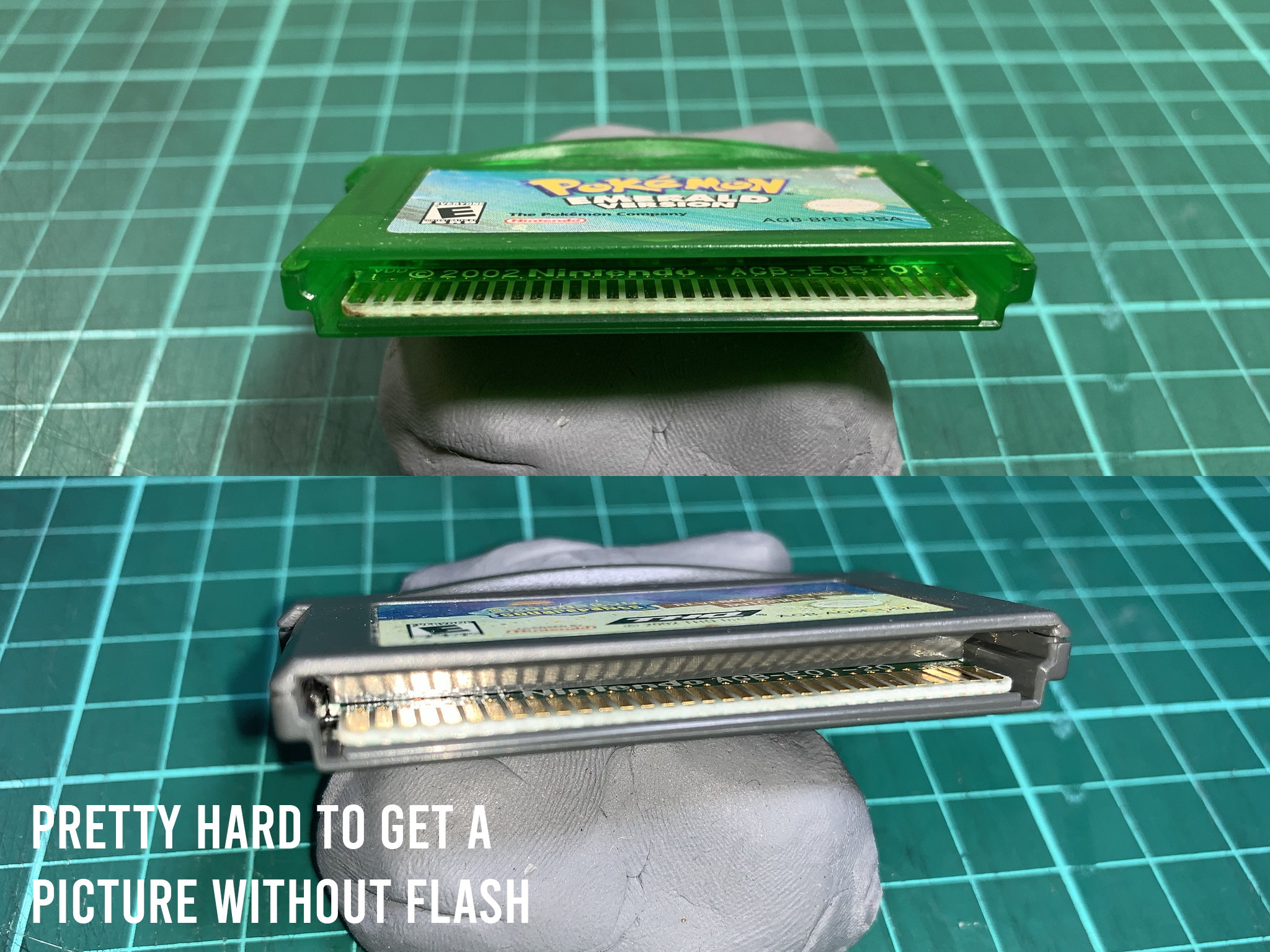 |
| What people should be looking for are the holes on the board perfectly lined up in a straight line under the Nintendo logo and above the gold terminals. Bootlegs will never have these and their presence guarantees that the board inside the cart is authentic. |
- If the font of the Nintendo logo doesn't look right or if the quality of the print looks shoddy, it's probably a bootleg.
- The majority of the motherboard shouldn't be visible from the bottom either. Some bootlegs have their entire boards exposed from the bottom.
As with the previous Game Boy PCB iterations, 4x gold rectangles will ALWAYS be on the back of legitimate PCB's. No 4x gold rectangles, not legit. Unfortunately, some counterfeiters have cottoned onto this, and readily produce games with the 4x golden rectangles. As a result, this is no longer a verification method. There are some rare cases where legitimate games do not include the 4x golden rectangles. In the DMG era, Nintendo used to off-load some manufacturing to third-parties. It's rare, but likely that other GBC and GBA titles could have had the same fate. This is why using the 4x golden rectangles is a relatively shitty verification method, and shouldn't be used.
Verifying Pokemon games
Pokemon games have noticeable differences compared to other Game Boy games, hence the different section.
Generation 3 - Ruby, Sapphire, FireRed, LeafGreen, Emerald
The fastest way to verify a gen 3 Pokemon game is look for the battery terminals in the front. The carts are translucent and you should be able to see them easily. If there's only a battery but no molding on the space on the cart for the terminals, it's bootleg.
 |
| Here's how to spot them in Pokemon carts without opening them. If you look at a Pokemon cart and it doesn't have this at the upper right corner of the label, it's bootleg. |
Here's a definite comparison between true and fakes:
Label
- The labels for Gen 3 games should have a gem-like/metallic effect, not glossy. Think hollow/foil trading cards.
- Label should have a factory imprint on it, like two numbers or a number and a letter. These can fade over time though.
Cart Colours and Translucency
- Translucent colored carts. The carts should be the right colors and amount of translucency.
- Fire Red and Leaf Green shouldn't be as translucent as Ruby, Sapphire, and Emerald. It should barely show in a lot of photos, and look more opaque than translucent.
Board
- Given the translucency of these carts, identifying whether the board is authentic or not should be very easy even without opening the cart.
- The Nintendo logo and the serial code in the proper font above the gold terminals. Some carts will have the Nintendo logo with just "Nintendo" written and some will have the enclosed logo.
- For Ruby, Sapphire, and Emerald, the batteries should not only be visible but should be oriented properly with one terminal pointed towards the lower left and the other pointed towards the upper right.
- There should also be space molded into the cart's front half in the same orientation as the battery's terminals. The two corners of this rectangular molding should easily be visible around the upper right corner of the label.
- Fire Red and Leaf Green should have no batteries at all but the rectangular molding for the battery terminals should still be visible on the carts.
The 4 gold rectangles on the back of the board which should be visible even with Fire Red and Leaf Green's less translucent carts, those alone guarantee the carts authentic. Unfortunately, some counterfeiters have cottoned onto this, and readily produce games with the 4x golden rectangles. As a result, this is no longer a verification method.There are also 2 gold squares on the top left and bottom right of the cartridge's board, front side. This confirms the authenticity of the board. If you're looking through the translucent plastic, three should be one easily seen square on the top left corner of the cartridge. Again, some counterfeiters have cottoned onto this, and readily produce games with the 2x golden squares. As a result, this is no longer a verification method.
Other Factors
- You should still be following the GBA information.
- Be suspicious of seller listings for full sets or cheap items. Pokemon carts are amongst the most pirated games due to their popularity.
- FireRed and LeafGreen will never have batteries.
Cartridge Colour/Variant Depository
Contrary to popular belief, there are many different colour variants of GBA cartridges. This section serves as a depository for authentic GBA carts. In some cases, different colour variants are also available to the ones shown. These will be marked with an asterisk (*).
Please right-click (or tap and hold the image down), and "Open Image in New Tab" for higher resolution. Due to the lighting used in the source files, colours may not be representative of their actual appearance.
| No. |
Description |
Colour |
Code |
Front |
Back |
| 1. |
Regular Cartridge |
Grey |
AGB-002 |
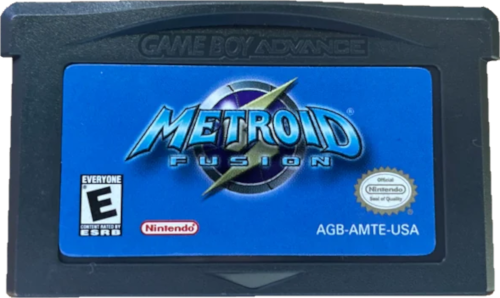 |
 |
| 2. |
Bit Generations Series |
Black |
AGB-002 |
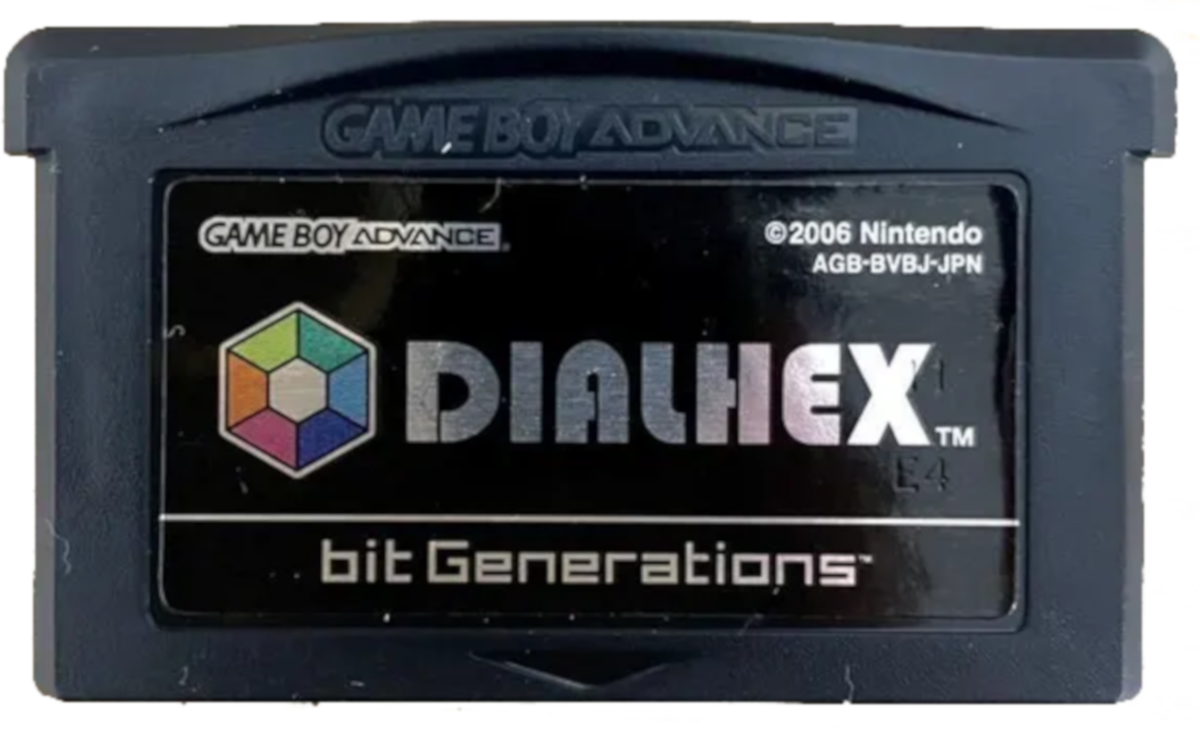 |
 |
| 3. |
Boktai Series |
Clear |
AGB-013 |
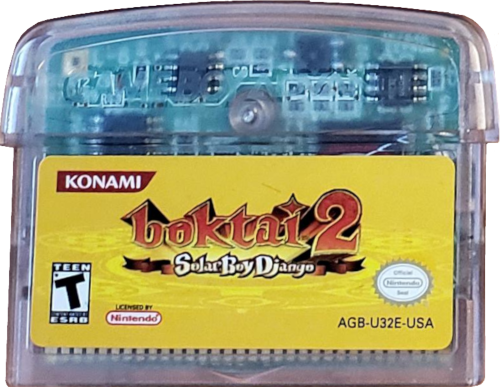 |
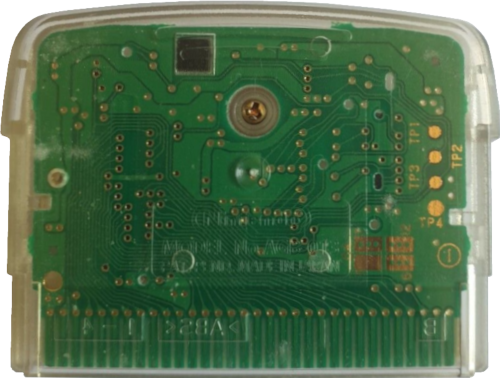 |
| 4. |
Classic NES Series |
Medium Grey |
AGB-002 |
 |
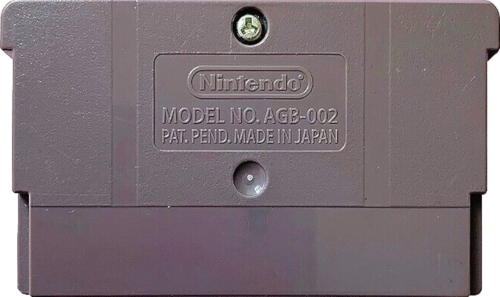 |
| 5. |
Classic NES Series (JP) |
Yellow |
AGB-002 |
 |
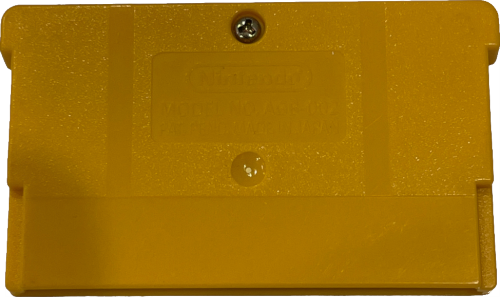 |
| 6. |
Classic NES Series (JP) |
Dark Red and White |
AGB-002 |
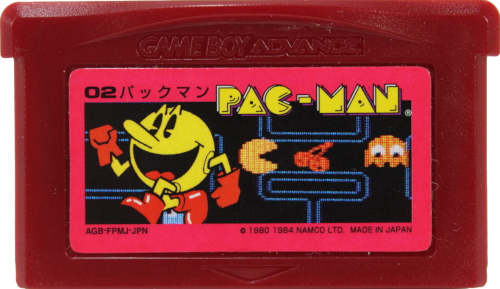 |
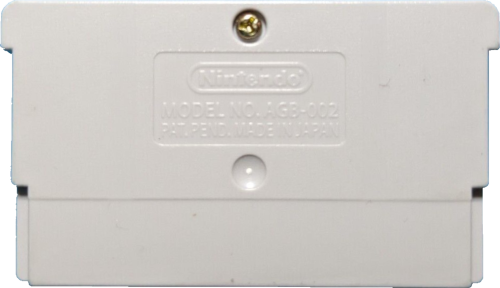 |
| 7. |
GBA Video Series |
Light Grey |
AGB-002 |
 |
 |
| 8. |
Drill Dozer |
Brown |
AGB-021A |
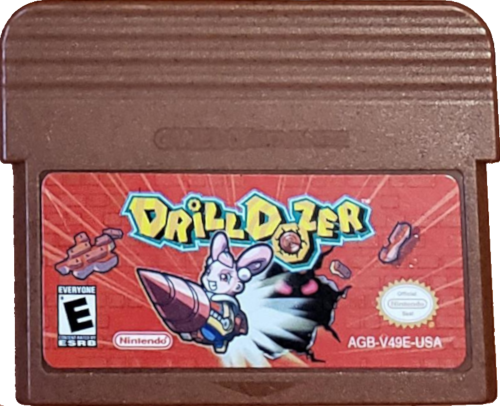 |
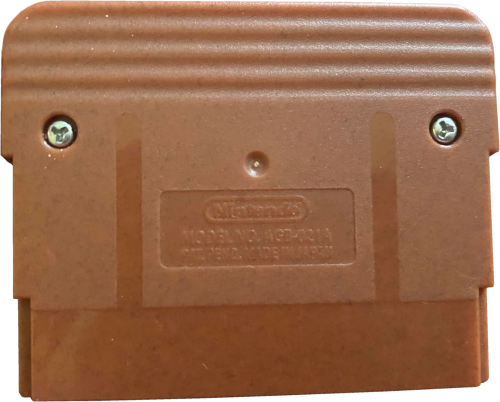 |
| 9. |
Drill Dozer (JP) |
Brown |
AGB-021 |
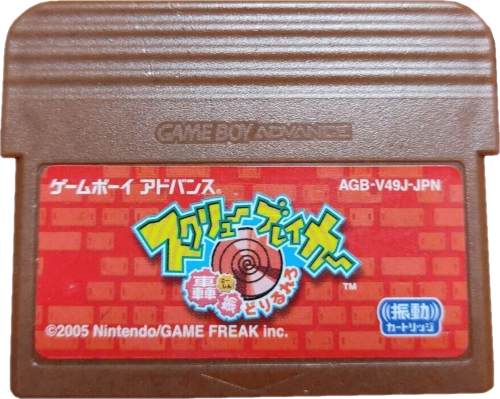 |
 |
| 10. |
Koro Koro Puzzle |
Grey |
AGB-013 |
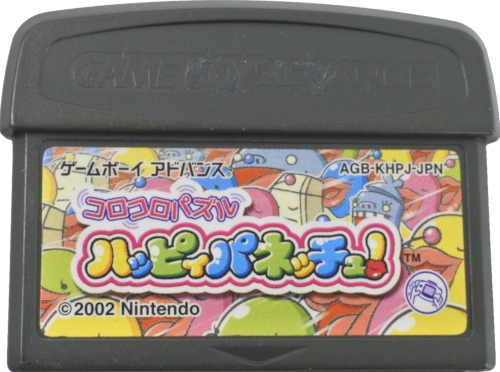 |
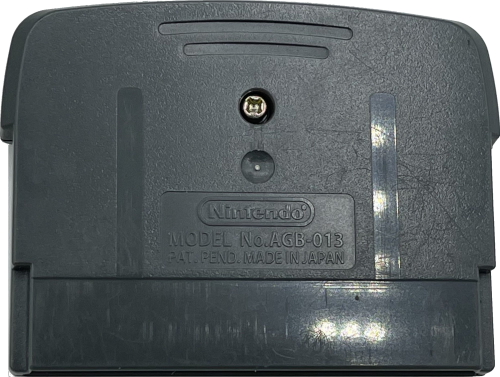 |
| 11*. |
Play-Yan |
Black |
AGS-006 |
 |
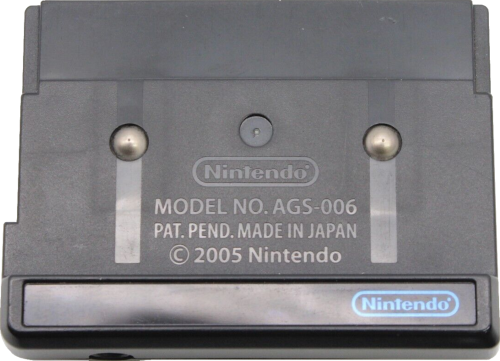 |
| 12. |
Pokemon Emerald |
Transparent Green |
AGB-002 |
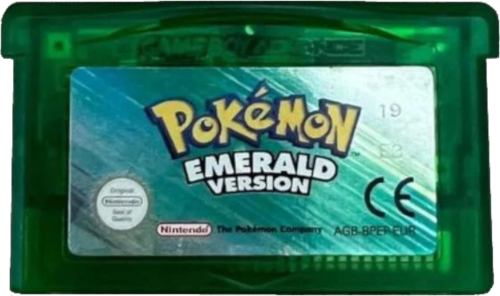 |
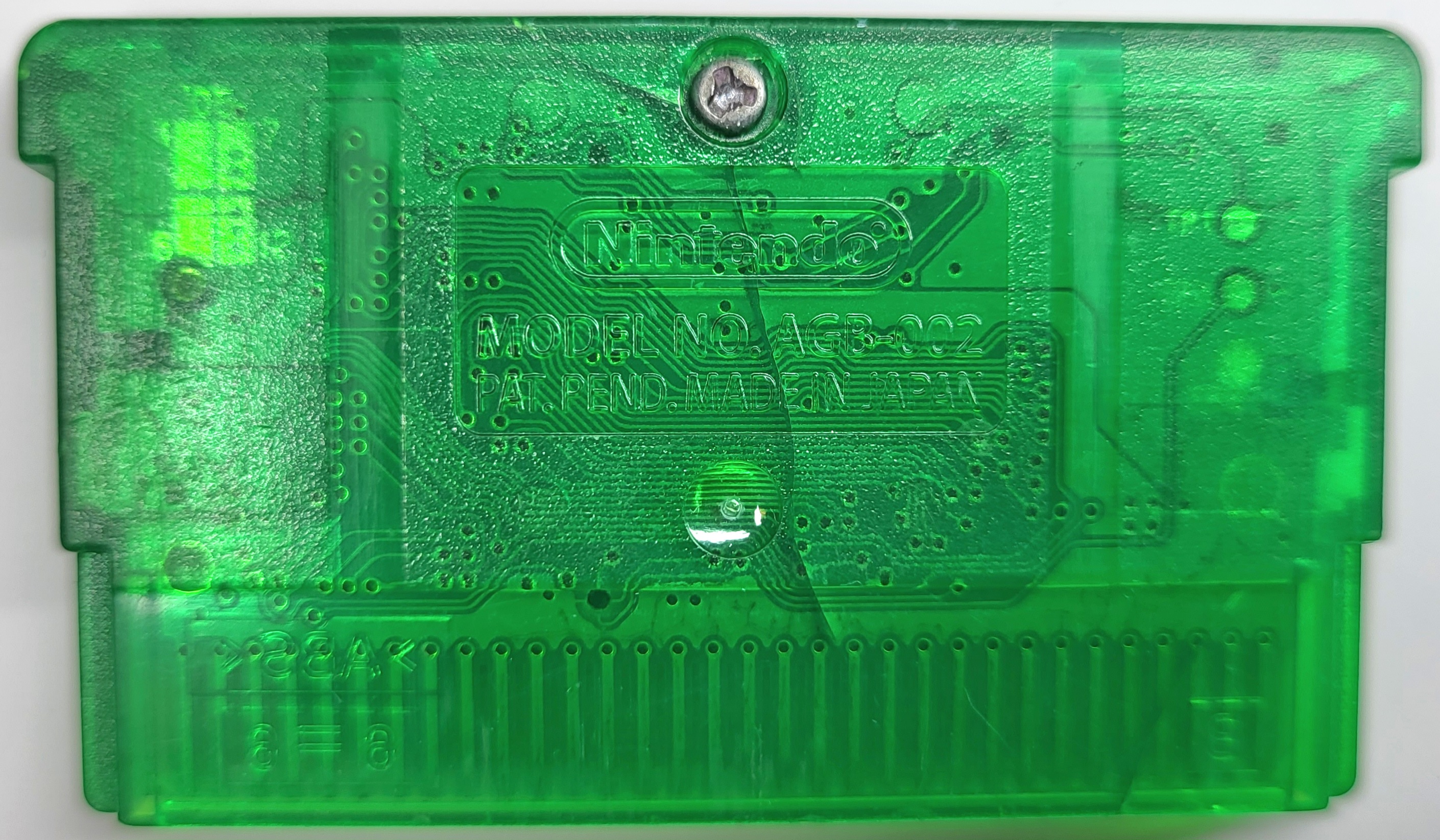 |
| 13. |
Pokemon FireRed |
Translucent Red |
AGB-002 |
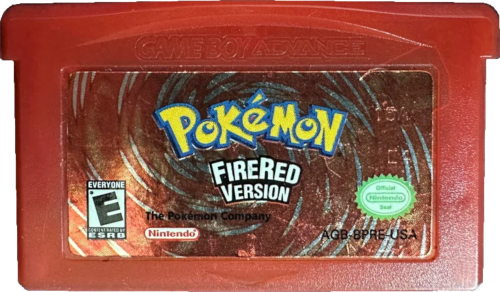 |
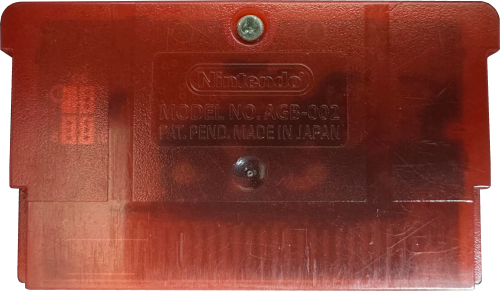 |
| 14. |
Pokemon LeafGreen |
Translucent Green |
AGB-002 |
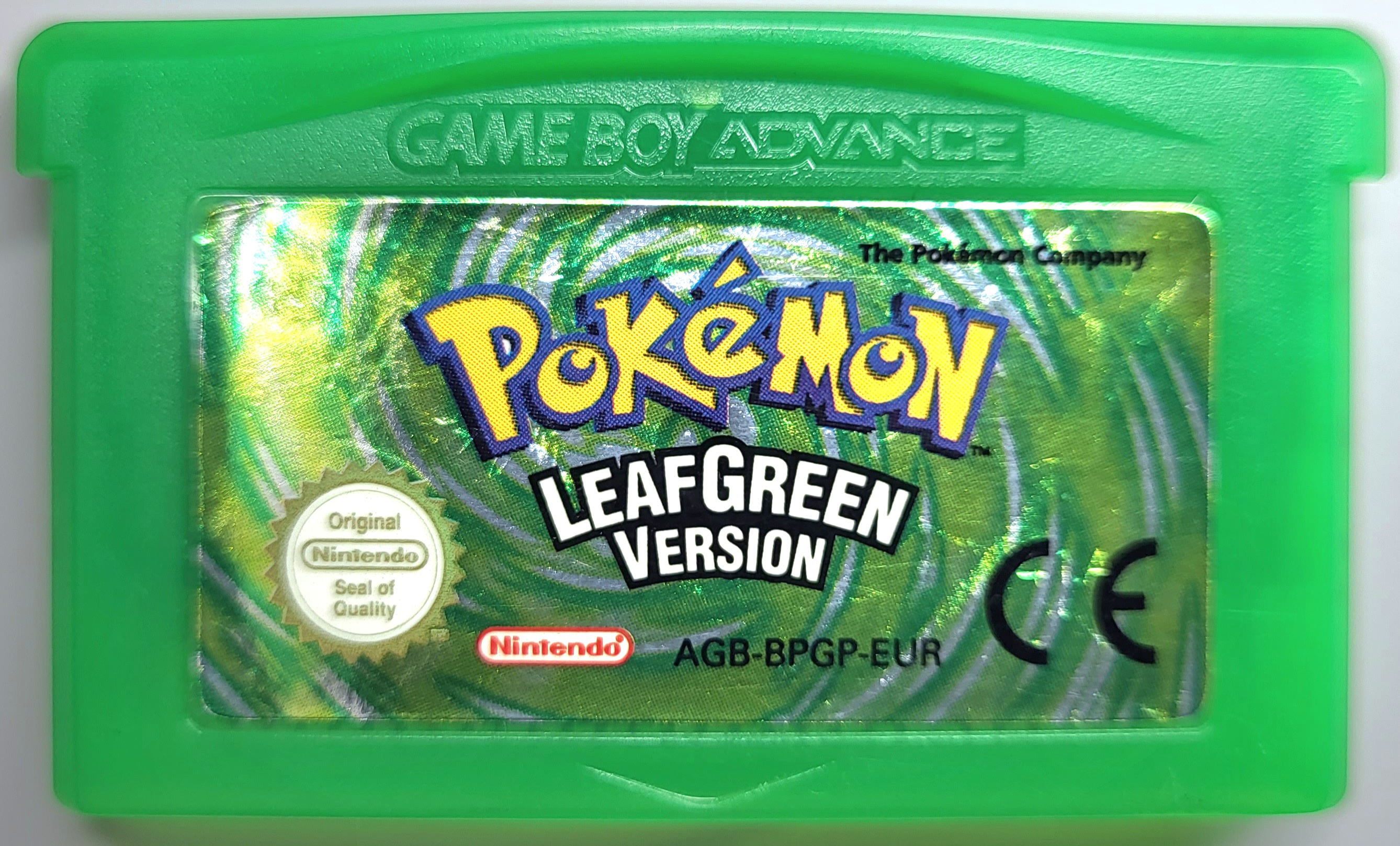 |
 |
| 15. |
Pokemon Ruby |
Transparent Red |
AGB-002 |
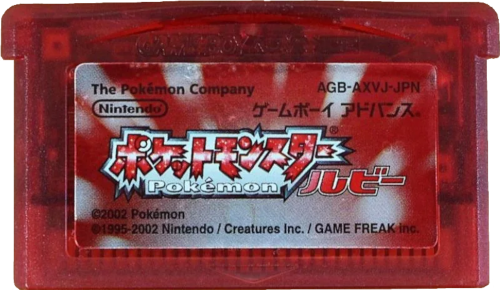 |
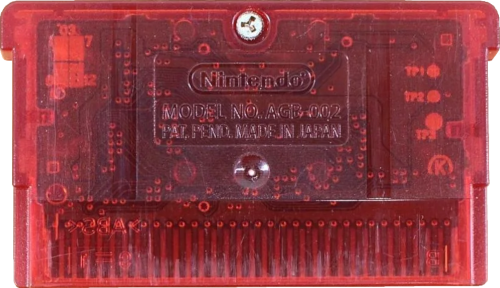 |
| 16. |
Pokemon Sapphire |
Transparent Blue |
AGB-002 |
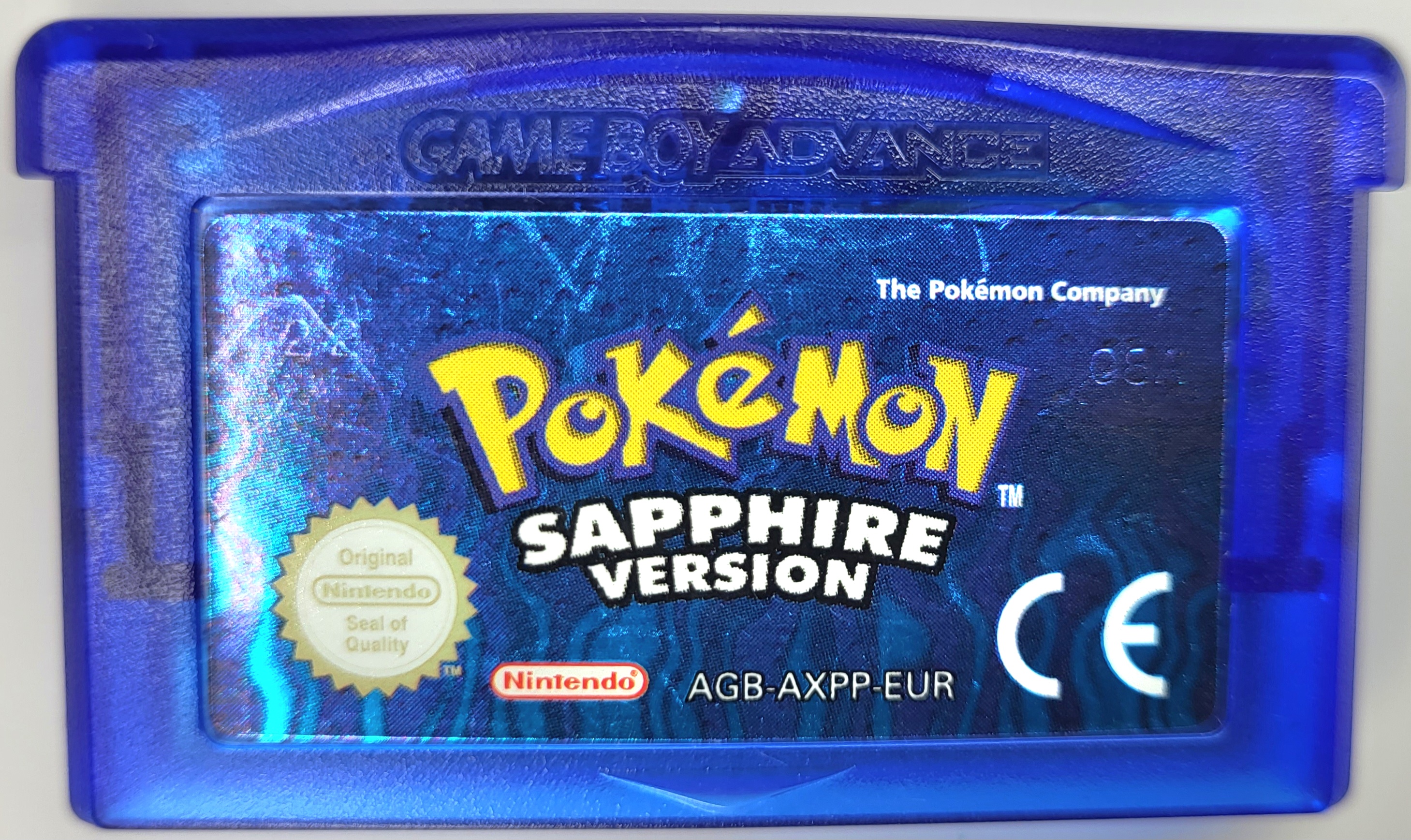 |
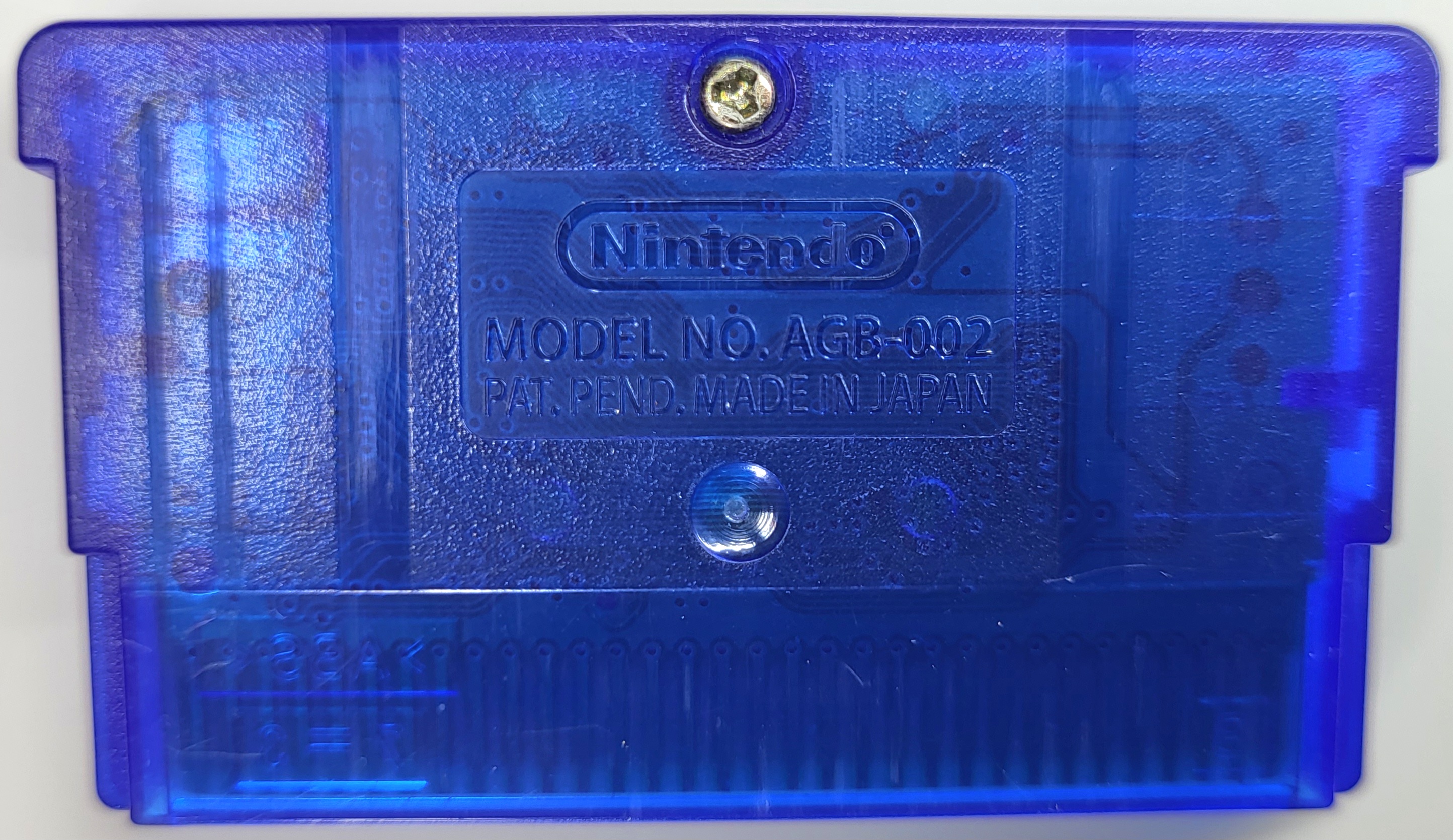 |
| 17*. |
Rockman EXE 4 Blue Moon |
Blue |
AGB-002 |
 |
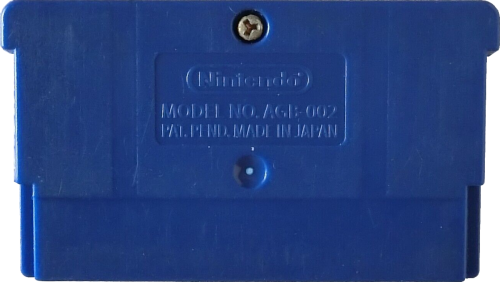 |
| 18*. |
Rockman EXE 4 Red Sun |
Red |
AGB-002 |
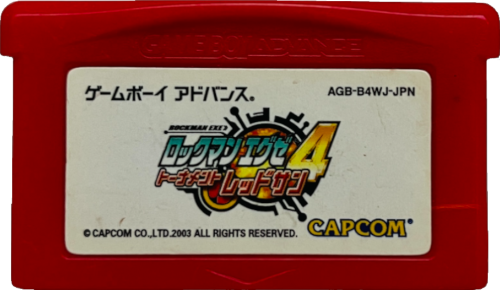 |
 |
| 19*. |
Rockman EXE 5 Team of Colonel |
Teal |
AGB-002 |
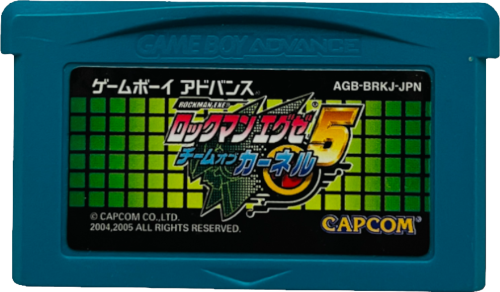 |
 |
| 20. |
WarioWare Twisted |
Transparent Grey |
AGB-019A |
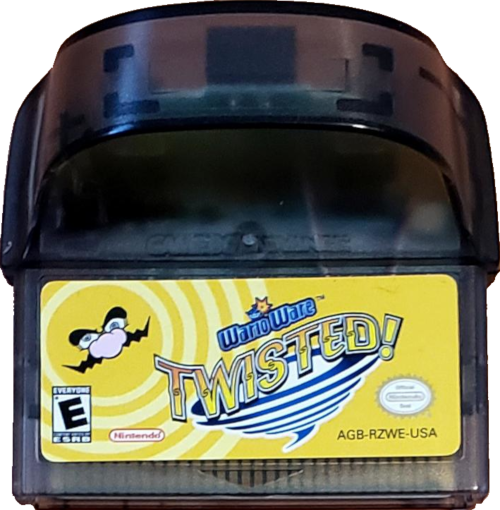 |
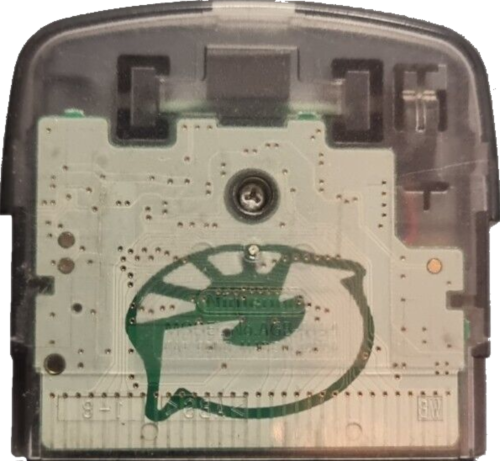 |
| 21. |
WarioWare Twisted (JP) |
Translucent White |
AGB-019 |
 |
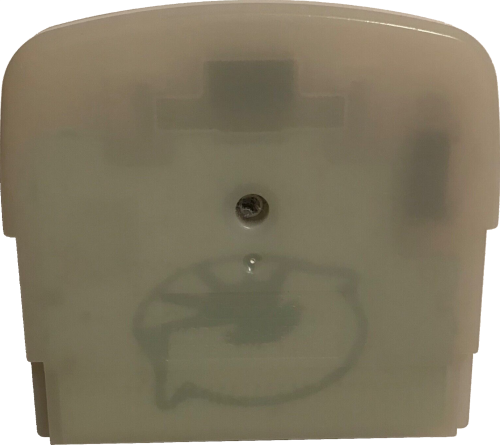 |
| 22*. |
Yoshi Topsy-Turvy |
Green and White |
AGB-013 |
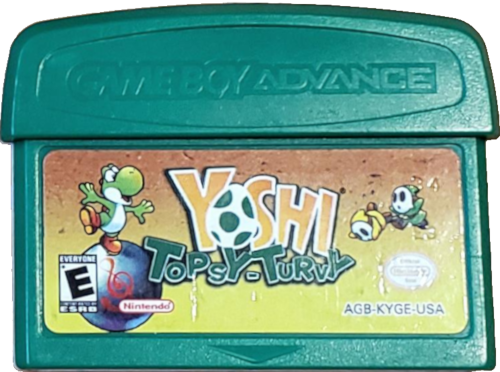 |
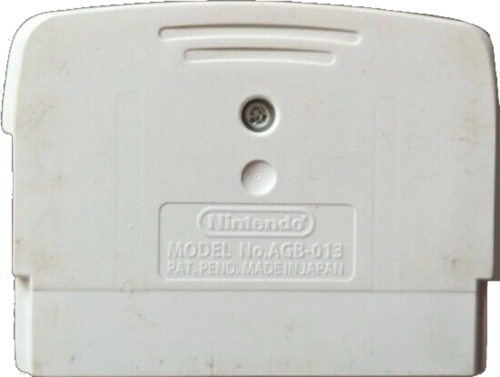 |
| 23. |
GBA Cleaner |
White |
AGB-023 |
 |
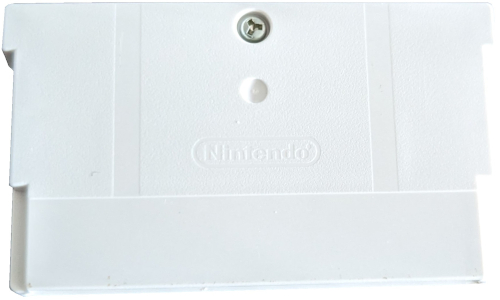 |
| 24*. |
Rev 2 AGB Development Cart |
Grey |
N/A |
 |
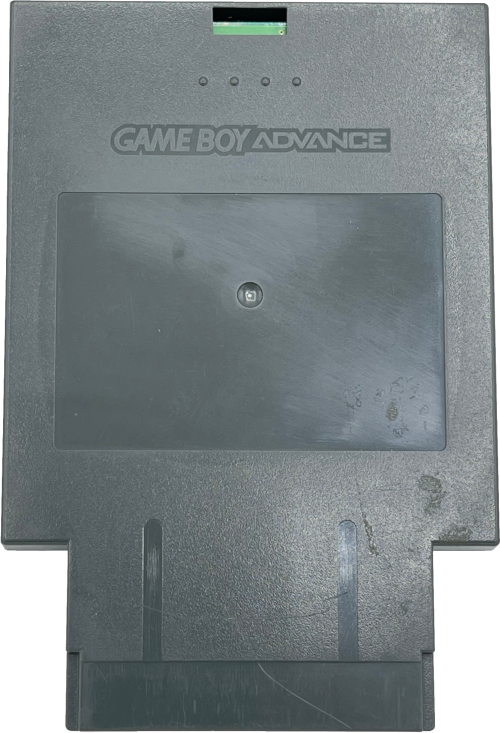 |
| 25*. |
Rev 3 AGB Development Cart |
Grey |
AGB-013 |
 |
 |
| 26. |
Activision Motion Pack |
White |
N/A |
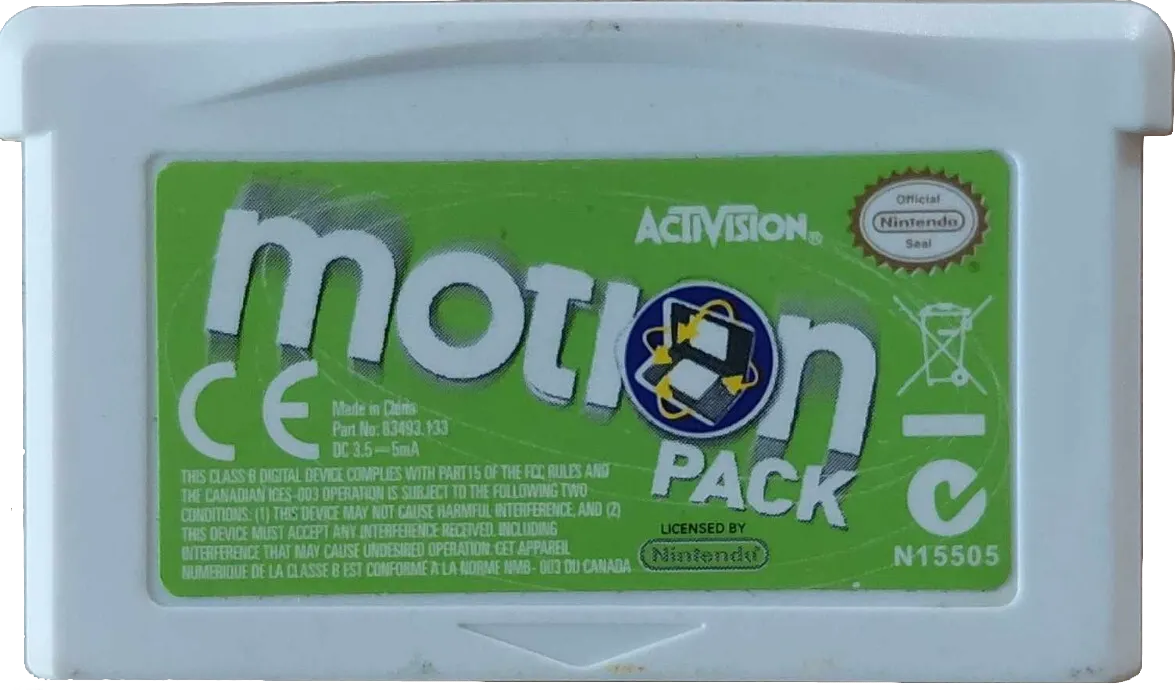 |
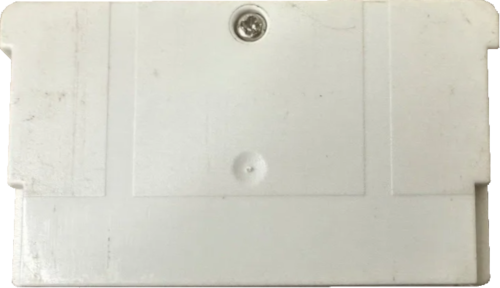 |
Different Variants
| No. |
Variant(s) |
Further Notes |
Image |
| 3 |
PAL copies have a different front casing. |
N/A |
 |
| 11 |
The Play-Yan Micro is the successor to the Play-Yan. Same AGS-006 casing, added functionality of MP4 and ASF playback, updated UI for the Game Boy Micro and improved sound quality through the 3.5mm port. |
The Play-Yan Garage Games are not compatible with the Play-Yan Micro. |
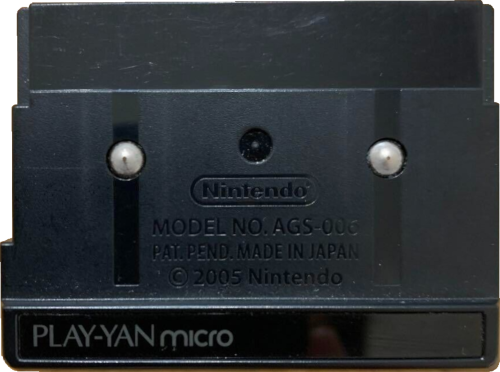 |
| 17 |
Rockman EXE 4 Blue Moon is also available in a standard grey cart. |
Also known as Mega Man Battle Network 4 Blue Moon outside of Japan. |
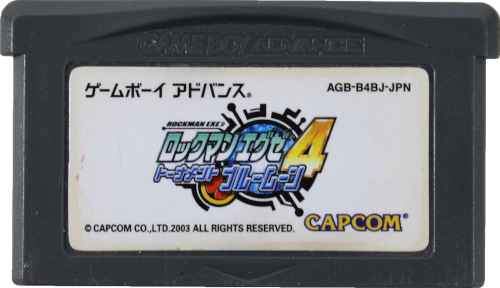 |
| 18 |
Rockman EXE 4 Red Sun is also available in a standard grey cart. |
Also known as Mega Man Battle Network 4 Red Sun outside of Japan. |
 |
| 19 |
N/A |
Also known as Mega Man Battle Network 5 Team Colonel outside of Japan. |
N/A |
| 22 |
PAL copies have a different front casing. |
Also known as Yoshi's Universal Gravitation in PAL regions. |
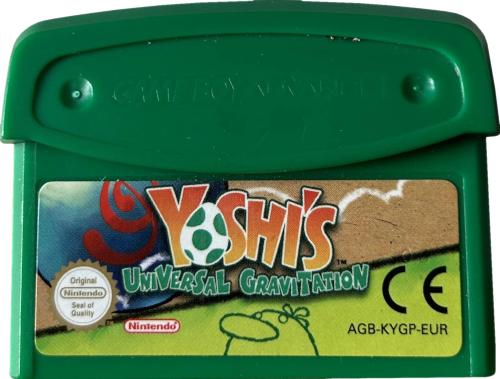 |
| 24 |
Rev 2 AGB GBA Development Carts were also released with 64Mb and 128Mb capacities. |
The 64Mb cartridges have E201728 on the front label. The 128Mb cartridges have E201736 on the front label. |
N/A |
| 25 |
Rev 3 AGB GBA Development Carts were also released with 64Mb and 128Mb capacities. |
The 64Mb cartridges have E201843 on the front label. The 128Mb cartridges have E201850 on the front label. |
N/A |
Credits
- Special thanks to SeanOrtiz for writing this guide, and giving us permission to use.



